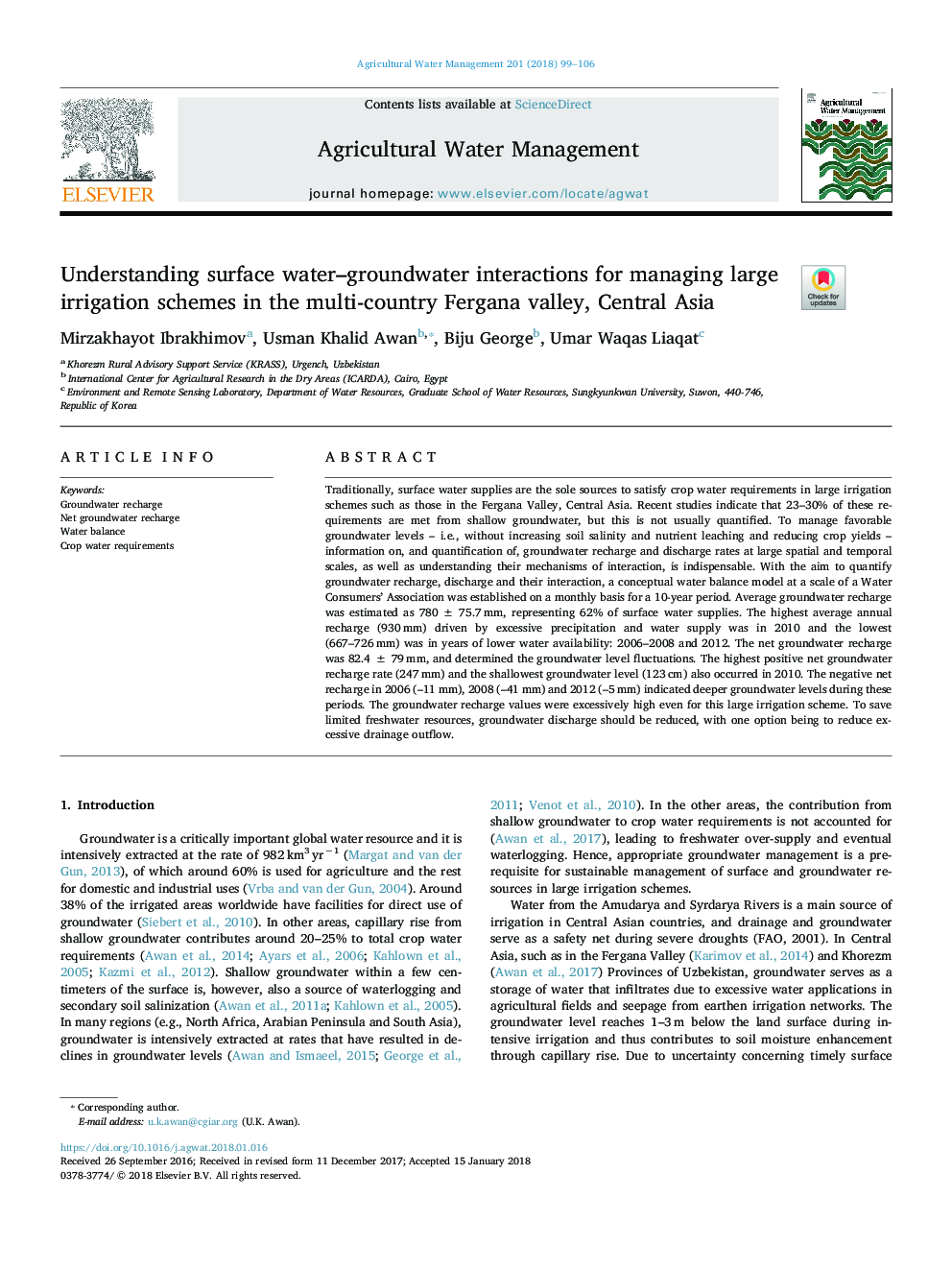| کد مقاله | کد نشریه | سال انتشار | مقاله انگلیسی | نسخه تمام متن |
|---|---|---|---|---|
| 8873067 | 1622879 | 2018 | 8 صفحه PDF | دانلود رایگان |
عنوان انگلیسی مقاله ISI
Understanding surface water-groundwater interactions for managing large irrigation schemes in the multi-country Fergana valley, Central Asia
ترجمه فارسی عنوان
درک تعاملات سطحی آب زیرزمینی برای مدیریت طرح های آبیاری بزرگ در دره فرغانه، آسیای مرکزی
دانلود مقاله + سفارش ترجمه
دانلود مقاله ISI انگلیسی
رایگان برای ایرانیان
کلمات کلیدی
شارژ آب زیرزمینی، شارژ خالص آب زیرزمینی، تعادل آب نیاز آب زراعی،
موضوعات مرتبط
علوم زیستی و بیوفناوری
علوم کشاورزی و بیولوژیک
علوم زراعت و اصلاح نباتات
چکیده انگلیسی
Traditionally, surface water supplies are the sole sources to satisfy crop water requirements in large irrigation schemes such as those in the Fergana Valley, Central Asia. Recent studies indicate that 23-30% of these requirements are met from shallow groundwater, but this is not usually quantified. To manage favorable groundwater levels - i.e., without increasing soil salinity and nutrient leaching and reducing crop yields - information on, and quantification of, groundwater recharge and discharge rates at large spatial and temporal scales, as well as understanding their mechanisms of interaction, is indispensable. With the aim to quantify groundwater recharge, discharge and their interaction, a conceptual water balance model at a scale of a Water Consumers' Association was established on a monthly basis for a 10-year period. Average groundwater recharge was estimated as 780â¯Â±â¯75.7â¯mm, representing 62% of surface water supplies. The highest average annual recharge (930â¯mm) driven by excessive precipitation and water supply was in 2010 and the lowest (667-726â¯mm) was in years of lower water availability: 2006-2008 and 2012. The net groundwater recharge was 82.4â¯Â±â¯79â¯mm, and determined the groundwater level fluctuations. The highest positive net groundwater recharge rate (247â¯mm) and the shallowest groundwater level (123â¯cm) also occurred in 2010. The negative net recharge in 2006 (-11â¯mm), 2008 (-41â¯mm) and 2012 (-5â¯mm) indicated deeper groundwater levels during these periods. The groundwater recharge values were excessively high even for this large irrigation scheme. To save limited freshwater resources, groundwater discharge should be reduced, with one option being to reduce excessive drainage outflow.
ناشر
Database: Elsevier - ScienceDirect (ساینس دایرکت)
Journal: Agricultural Water Management - Volume 201, 31 March 2018, Pages 99-106
Journal: Agricultural Water Management - Volume 201, 31 March 2018, Pages 99-106
نویسندگان
Mirzakhayot Ibrakhimov, Usman Khalid Awan, Biju George, Umar Waqas Liaqat,
